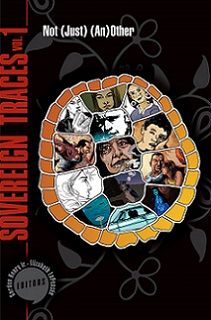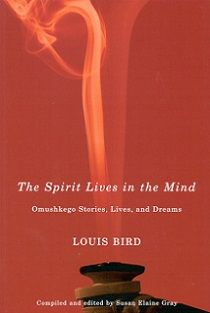First Comics News: You wrote “An Athabasca Story” what is the basic storyline of it?
You wrote “An Athabasca Story” what is the basic storyline of it?
Warren Cariou: It’s about a traditional Indigenous being who stumbles upon a contemporary tar sands mine (in the Athabasca region of western Canada) and tries to understand what these humans are doing to the earth. Since Elder Brother is a naturally curious individual, he ends up getting more deeply involved in the mining activity than he at first intends.
1st: Who is the main character in “An Athabasca Story”?
Warren: Elder Brother is a kind of amalgamation of some characters from Indigenous traditional storytelling. To me, he represents the persistence of traditional ways of thinking, even within the modern, colonized world.
1st: Which culture is “An Athabasca Story” from?
Warren: Basically it reflects the Indigenous cultures that inhabit the territories where the tar sands are mined and processed: the Cree, Metis and Dene people of Alberta and Saskatchewan.
1st: What does coal have to do with folklore?
Warren: It may look like coal in the illustrations but it is actually petroleum-based tar that is mined and then refined into fuels like diesel and gasoline. The tar sands are one of the main sources for fuelling our contemporary energy-intensive lifestyle in North America today. In years gone by, this tar had traditional uses for the Indigenous people of the Athabasca region, who used it to seal their canoes and their birch bark bowls. Some even say that the tar could be used for healing wounds. So in that way, it is linked to traditional cultures of the area. Also, as our source of energy, the petroleum tar could be understood as a basis of contemporary western society’s own folklore or belief system. Our mass culture today would be impossible without oil, and I believe that this connection to oil is deeply embedded in our art, movies, literature, and music. One could even say that the culture of oil is a fundamental aspect of contemporary western folklore.

1st: What do you think of Nicholas Burns art style?
Warren: I love the way Nicholas imagined and created the world of the story, with the huge machinery and the looming walls of tar. The color work is also fantastic in the way it evokes the smoky netherworld that Elder Brother stumbles upon.
1st: How well did Nicholas Burns bring out Elder Brother’s character?
Warren: I think he did a fantastic job of this as well. When I wrote the story, I had a somewhat fuzzy idea of what Elder Brother looks like, but Nicholas and I had some great conversations about how he should look. The version of him in the comic is very expressive of his personality and I’m thrilled with how Nicholas portrays him.
1st: Why is the Cree culture interesting?
Warren: For me, it is the Cree traditional stories that are so fascinating. They are so vibrant and so full of extraordinary events. They stick in the mind like the most vivid dreams, and they contain generations and generations of wisdom. I can listen to those stories, and read them, again and again.
1st: Who is your Elder Louis Bird and why is he important in your life?
Warren: Louis Bird is an Omushkego Cree Elder and storyteller from the Winisk First Nation in Peawanuck, Ontario, which is near the coast of Hudson Bay. I have known him for eleven or twelve years, and have had the privilege to work with him on Cree storytelling traditions. He is one of the most generous people I have ever met, and he is a truly amazing performer of the stories. My students have loved having the opportunity to meet him and to hear him tell stories. To me, Louis is the ultimate embodiment of what a teacher can and should be: he teaches with humour and with great love, and he is also an amazing listener. It has been a great honour to know him and to learn about Omushkego stories from him.

1st: Why is “The Spirit Lives in the Mind” something everyone would love?
Warren: The Spirit Lives in the Mind is one of Louis Bird’s books, and it collects many of his Omushkego Cree stories, along with some very illuminating discussions about the contexts and the meanings of those stories within Omushkego culture. It is an excellent introduction to the Cree storytelling tradition for anyone who is interested.
1st: Why is folklore an important part of the modern world or is it?
Warren: I think we all live our lives according to stories, whether we know it or not. Folklore is one way of categorizing those stories. I feel that the traditional stories of many cultures–not only Indigenous ones–contain incredibly important teachings that we really need to remember and learn from in our contemporary world. Those old stories are also simply wonderful, engaging and unforgettable experiences, and as such we should celebrate them and pass them along to the next generations.
1st: How do Cree and Metis cultures differ?
Warren: That is a complicated question, but to address this in a simple way I can say that a lot of Metis people in my home territory speak the Cree language and have Cree relatives. The government has tried to separate Metis people from Cree and other First Nations, but there are very strong ties that keep us connected in many ways. We are cousins, in a way, with related stories and teachings, but also with our own distinct identities.
1st: Would you like to write more comic books about Cree stories?
Warren: I think that Louis Bird’s stories would make amazing comic books. I will be talking with him to see if he is interested in doing this.
1st: What is your regular job and how is it going?
Warren: I teach Indigenous Literature at the University of Manitoba. It’s a great place to do this kind of work, and it has given me the opportunity to work with Louis Bird and several other great storytellers, so I think it is going very well.
1st: What would you like to say to those who want to learn more about native folklore?
Warren: For those who are interested, I would say that it’s important to seek out legitimate sources of the stories–by which I mean, versions of the stories that are presented within the Indigenous contexts that they were created and told. Often the more legitimate versions of these stories will be listed under the category of Indigenous Studies. The other contributors to _Sovereign Traces_ are all fantastic Indigenous writers and storytellers in their own right, so their work is a great place to start. Also, don’t pass up an opportunity to meet and listen to an Indigenous storyteller in a live setting. There is no substitute for hearing the story directly from the storyteller, and it gives you the chance to make the kind of personal connection that can change your life. That was what meeting Louis Bird did for me.
